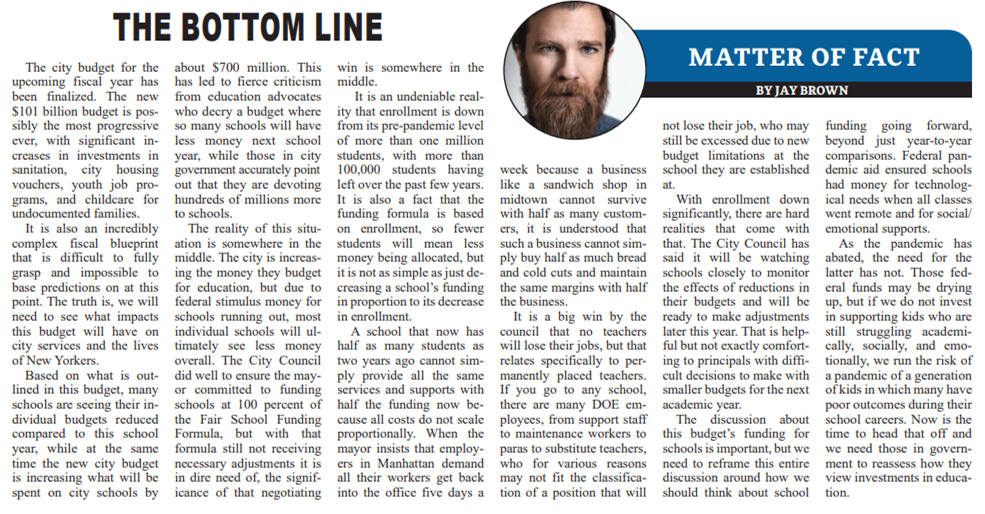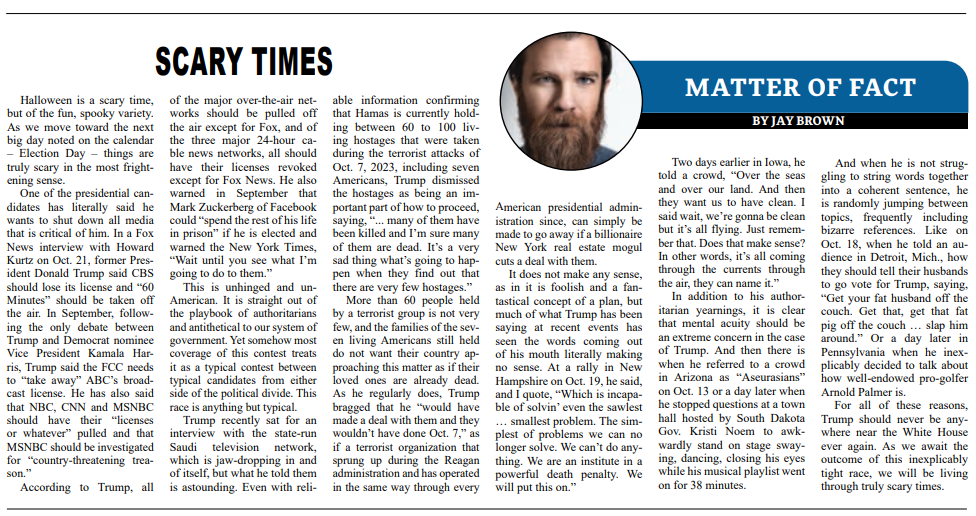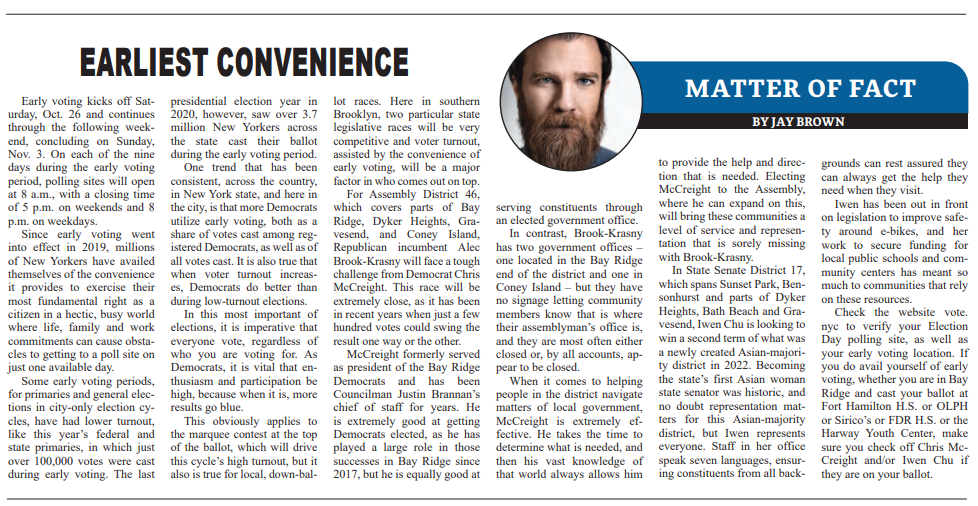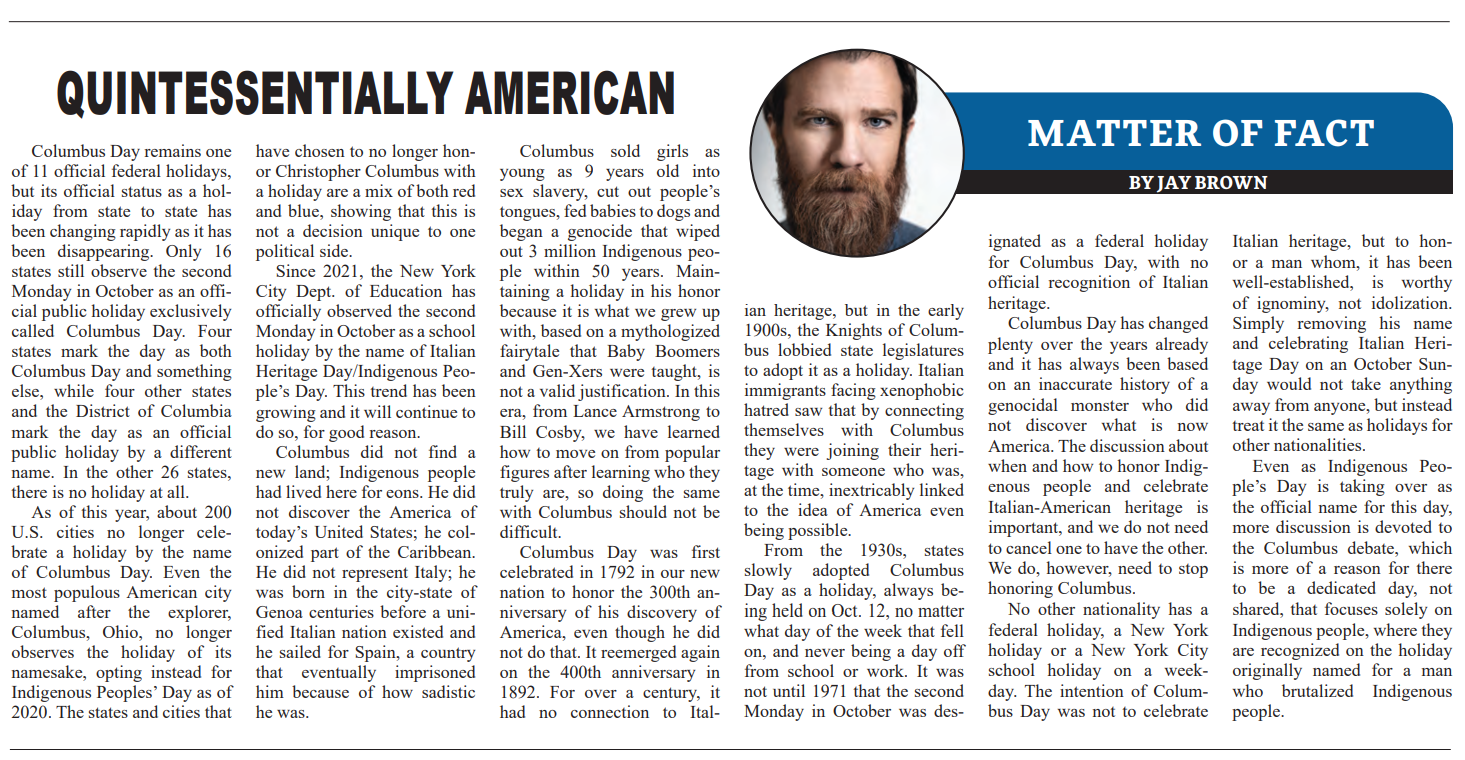This column, from the weekly opinion piece MATTER OF FACT, first appeared on BrooklynReporter.com, the Home Reporter and Spectator dated June 17, 2022
The city budget for the upcoming fiscal year has been finalized. The new $101 billion budget is possibly the most progressive ever, with significant increases in investments in sanitation, city housing vouchers, youth job programs, and childcare for undocumented families.
It is also an incredibly complex fiscal blueprint that is difficult to fully grasp and impossible to base predictions on at this point. The truth is, we will need to see what impacts this budget will have on city services and the lives of New Yorkers.
Based on what is outlined in this budget, many schools are seeing their individual budgets reduced, compared to this school year, while at the same time the new city budget is increasing what will be spent on city schools by about $700 million. This has led fierce criticism from education advocates who decry a budget where so many schools will have less money next school year, while those in city government accurately point out that they are devoting hundreds of millions more to schools.
The reality of this situation is somewhere in the middle. The city is increasing the money they budget for education, but due to federal stimulus money for schools running out, most individual schools will ultimately see less money overall. The City Council did well to ensure the mayor committed to funding schools at 100 percent of the Fair School Funding Formula, but with that formula still not receiving necessary adjustments it is in dire need of, the significance of that negotiating win is somewhere in the middle.
It is an undeniable reality that enrollment is down from its pre-pandemic level of over one million students, with over 100,000 students having left over the past few years. It is also a fact that the funding formula is based on enrollment, so less students will mean less money being allocated, but it is not as simple as just decreasing a school’s funding in proportion to its decrease in enrollment.
“The discussion about this budget’s funding for schools is important, but we need to reframe this entire discussion around how we should think about school funding going forward, beyond just year-to-year comparisons.”
Citation….
A school that now has half as many students as two years ago cannot simply provide all the same services and supports with half the funding now because all costs do not scale proportionally. When the mayor insists that employers in Manhattan demand all their workers get back into the office five days a week because a business like a sandwich shop in midtown cannot survive with half as many customers, it is understood that such a business cannot simply buy half as much bread and cold cuts and maintain the same margins with half the business.
It is a big win by the Council that no teachers will lose their jobs, but that relates specifically to permanently placed teachers. If you go to any school, there are many DOE employees, from support staff to maintenance workers to paras to substitute teachers, who for various reasons may not fit the classification of a position that will not lose their job, who may still be excessed due to new budget limitations at the school they are established at.
With enrollment down significantly, there are hard realities that come with that. The City Council has stated they will be watching schools closely monitor the affects of reductions in their budgets and will be ready to make adjustments later this year. That is helpful but not exactly comforting to principals with difficult decisions to make with smaller budgets for the next academic year.
The discussion about this budget’s funding for schools is important, but we need to reframe this entire discussion around how we should think about school funding going forward, beyond just year-to-year comparisons. Federal pandemic aid ensured schools had money for technological needs when all classes went remote and for social/emotional supports.
As the pandemic has abated, the need for the latter has not. Those federal funds may be drying up, but if we do not invest in supporting kids who are still struggling academically, socially, and emotionally, we run the risk of a pandemic of a generation of kids in which many have poor outcomes during their school careers. Now is the time to head that off and we need those in government to reassess how they view investments in education.




